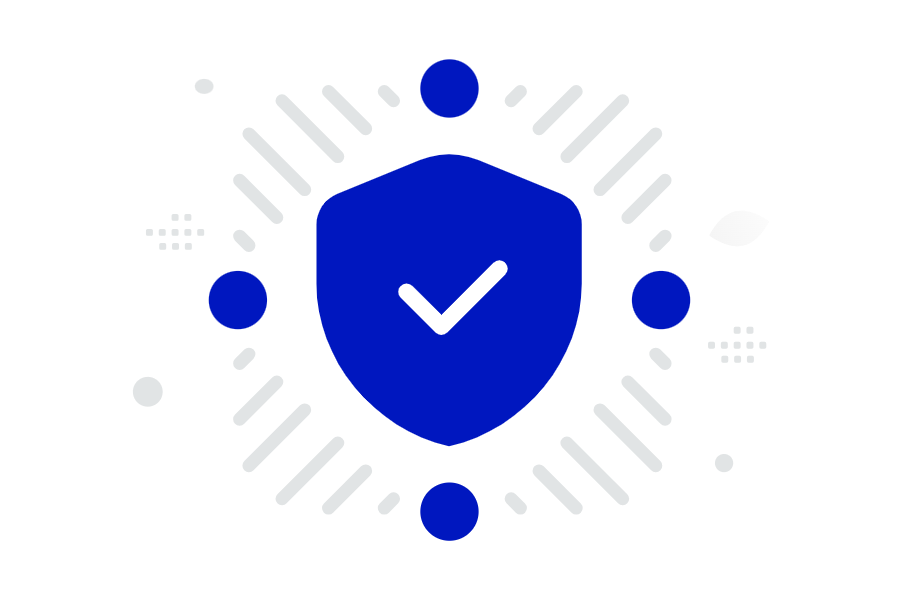How Do Bots Attack Your Website? – Growing Threat of Bot Attack
In recent years, malicious bots have surged to unprecedented levels, posing severe challenges across the digital ecosystem. In fact, bots accounted for 51% of total internet traffic this year, underscoring their massive impact. Bot attack goes far beyond simple system disruptions, causing direct financial losses, reputational damage, legal risks, and even distortions in business decision-making for enterprises worldwide.

The Evolution of Bot Attack
In the past, sophisticated cyberattacks were largely executed by highly skilled hacker groups. Today, however, even attackers with minimal technical knowledge can easily create bot scripts using simple tools. The percentage of “simple malicious bot” traffic rose from 33.4% in 2022 to 39.6% in 2023, highlighting the growing accessibility of bot-driven attacks.
This trend demonstrates the democratization of cyber threats. As attack complexity decreases, businesses of all sizes and industries are now exposed to constant bot-related risks, ranging from small-scale individual attacks to large-scale coordinated assaults. Companies must not only prepare for targeted attacks but also defend against widespread, automated bot campaigns. This shift highlights the limitations of traditional signature-based defense models and underscores the urgent need for intelligent security solutions that detect and counterattack behaviors in real time.
How Do Malicious Bots Attack?
Credential Stuffing and Account Takeover (ATO)
Credential stuffing is one of the most common and effective forms of bot attacks. In this method, bots use stolen or purchased username-password pairs from data breaches or the dark web to launch automated login attempts across multiple websites. Because many users reuse credentials across platforms, attackers can easily take over accounts without advanced hacking techniques. Once compromised, these accounts often lead to financial fraud and further exploitation.
Unlike brute-force attacks, which repeatedly test random passwords against a single account, credential stuffing uses verified credentials and attempts a single login per site. This makes the attack far more difficult to detect. Attackers may even employ IP spoofing to disguise their origin, further complicating defense efforts.

DDoS Attacks
Distributed Denial-of-Service (DDoS) attacks use botnets to overwhelm websites or applications with traffic, disrupting service availability. Traditional DDoS attacks primarily exhausted bandwidth. However, modern attacks have evolved to target application-layer vulnerabilities. For example, Layer 7 (L7) attacks, such as HTTP Flood or Slowloris, mimic legitimate traffic to deplete server resources.
These advanced attacks require far less traffic to cause severe disruption, making detection extremely challenging. This evolution signals the shift of DDoS from a “physical threat” to a “logical threat.” As a result, deploying a Web Application Firewall (WAF) or Web Application and API Protection (WAAP) solution with advanced L7 defense capabilities is essential. These solutions must differentiate between malicious and legitimate traffic with precision.
Other Attack Methods
- Content Scraping Bots: Exploit web crawlers to extract content or pricing information from competitors, leading to copyright violations and unfair market manipulation.
- Ticketing and Inventory Bots: Snatch limited event tickets or retail stock before real customers can purchase, fueling black-market resales and inventory denial attacks.
- Click Fraud Bots: Generate fake ad clicks to drain advertisers’ budgets and inflate publisher revenues fraudulently.
- Spam Bots: Collect email addresses or create fake accounts to flood forums and social platforms with malicious links and spam.
These attacks do not merely exploit technical vulnerabilities; they target core business logic. For example, ticket bots exploit e-commerce processes, while click fraud bots abuse advertising ecosystems. Effective defenses must therefore go beyond patching vulnerabilities to prevent the misuse of legitimate business functions.
The Impact of Malicious Bot Attacks
Financial Losses
The costs of bot attacks extend far beyond fraud-related losses. For example, repeated login lockouts caused by failed credential stuffing attempts force customers to contact support, increasing operational costs. Fraud investigation teams are also forced to divert resources from strategic analysis to routine bot-related incidents. Additionally, click fraud wastes marketing budgets, reducing ROI and impacting overall profitability.
These costs accumulate across both immediate and systemic dimensions, representing ongoing waste of time and resources rather than isolated incidents.

Brand Reputation and Customer Trust
A bot attack can damage brand value significantly. Account takeovers, service disruptions, and data breaches reduce customer satisfaction and can permanently sever customer relationships. A U.S. survey revealed that over 25% of consumers would switch banks if dissatisfied with fraud response measures.
Once customer trust is broken, long-term revenue and market competitiveness are jeopardized. Therefore, investing in bot defense is not just a technical necessity but a critical strategy for business sustainability.
Legal and Compliance Risks
Malicious bots undermine data integrity and regulatory compliance. For instance, bots can distort website analytics, leading to poor marketing decisions. Fake social media accounts also mislead investors by inflating user metrics, as seen in Twitter’s 2022 bot-account valuation controversy.
More critically, bot-driven data breaches can result in violations of strict regulations such as GDPR. These violations carry severe financial penalties that threaten the survival of global enterprises. As a result, bot protection must include not only attack mitigation but also traffic analysis and compliance support.
How to Mitigate Bot Attacks
Use Advanced Bot Defense Solutions
The simplest and most effective approach is adopting a proven bot protection solution. The right solution depends on the size, infrastructure, and security capabilities of the business.

For example, e-commerce or fintech companies with frequent service launches and fluctuating traffic may benefit from Cloudbric WAF+, a scalable cloud-based WAF. Meanwhile, organizations lacking dedicated security teams may prefer Cloudbric Managed Rules, a managed service that enhances operational efficiency.
Build Multi-Layered Security Architectures
A WAF or WAAP solution is essential but not sufficient on its own. Enterprises must integrate these solutions with firewalls, Intrusion Prevention Systems (IPS), and Endpoint Protection to establish a comprehensive defense framework.
Continuous Monitoring and Adaptive Defense
Bot defenses require ongoing monitoring and policy adjustments based on security reports. Modern bots use AI and machine learning to adjust strategies dynamically, including adaptive DDoS attacks. Therefore, organizations must not rely solely on automated tools but also empower human experts to analyze threat data and deploy proactive countermeasures.

Malicious bots represent one of the most pressing global cybersecurity challenges today. They threaten not only technology but also business continuity, brand trust, and regulatory compliance. Penta Security, as a top global cybersecurity company, emphasizes that advanced bot mitigation is not an optional add-on but an essential investment for enterprises navigating today’s digital economy.
Click here to subscribe our Newsletter
Click here for inquiries regarding the partner system of Penta Security
Check out Penta Security’s product lines:
Web Application Firewall: WAPPLES
Database Encryption: D.AMO
Check out the product lines of Cloudbric by Penta Security:
Cloud-based Fully Managed WAAP: Cloudbric WAF+
Agent based Zero Trust Network Access Solution: Cloudbric PAS
Agentless Zero Trust Network Access Solution: Cloudbric RAS
Click here for inquiries regarding the partner system of Cloudbric
